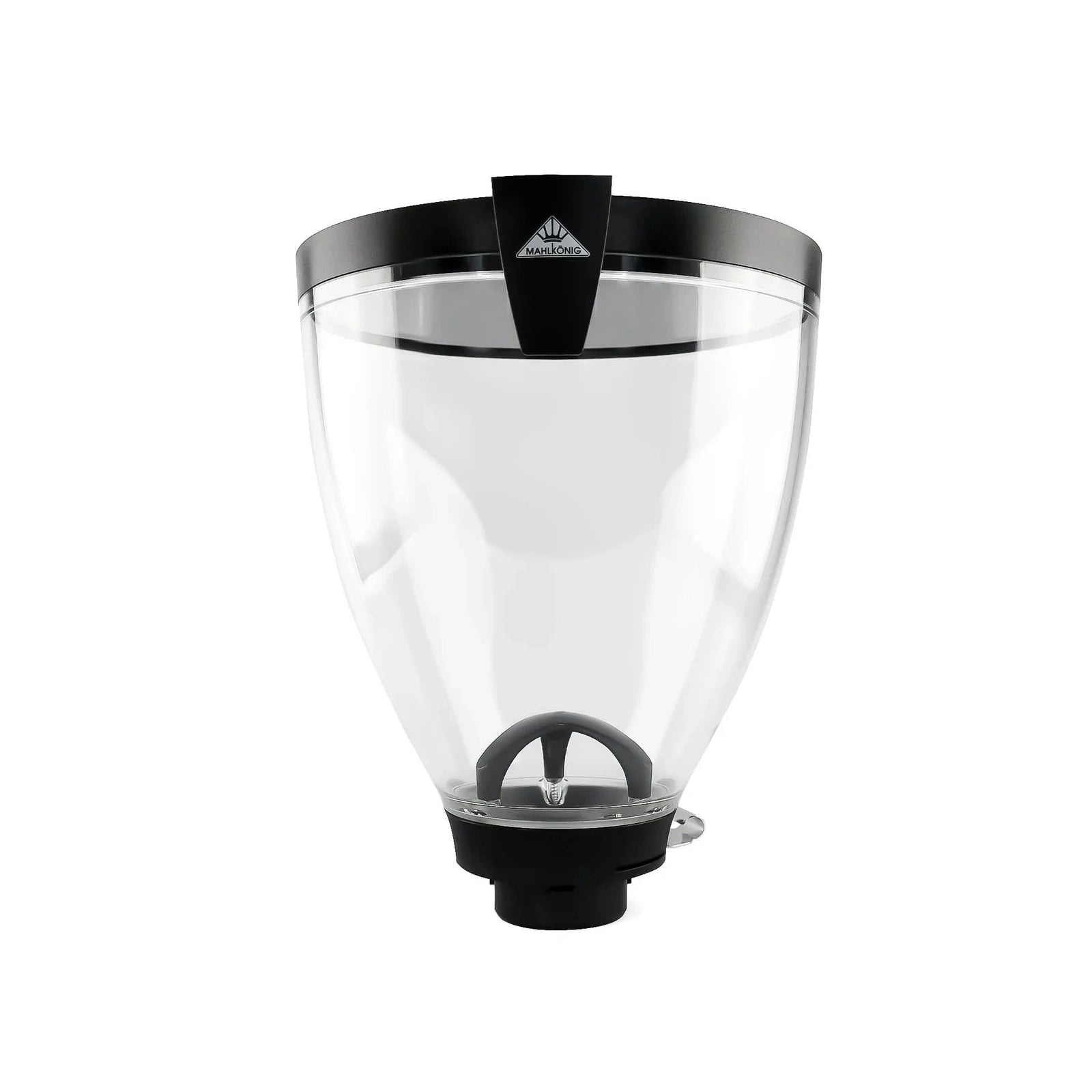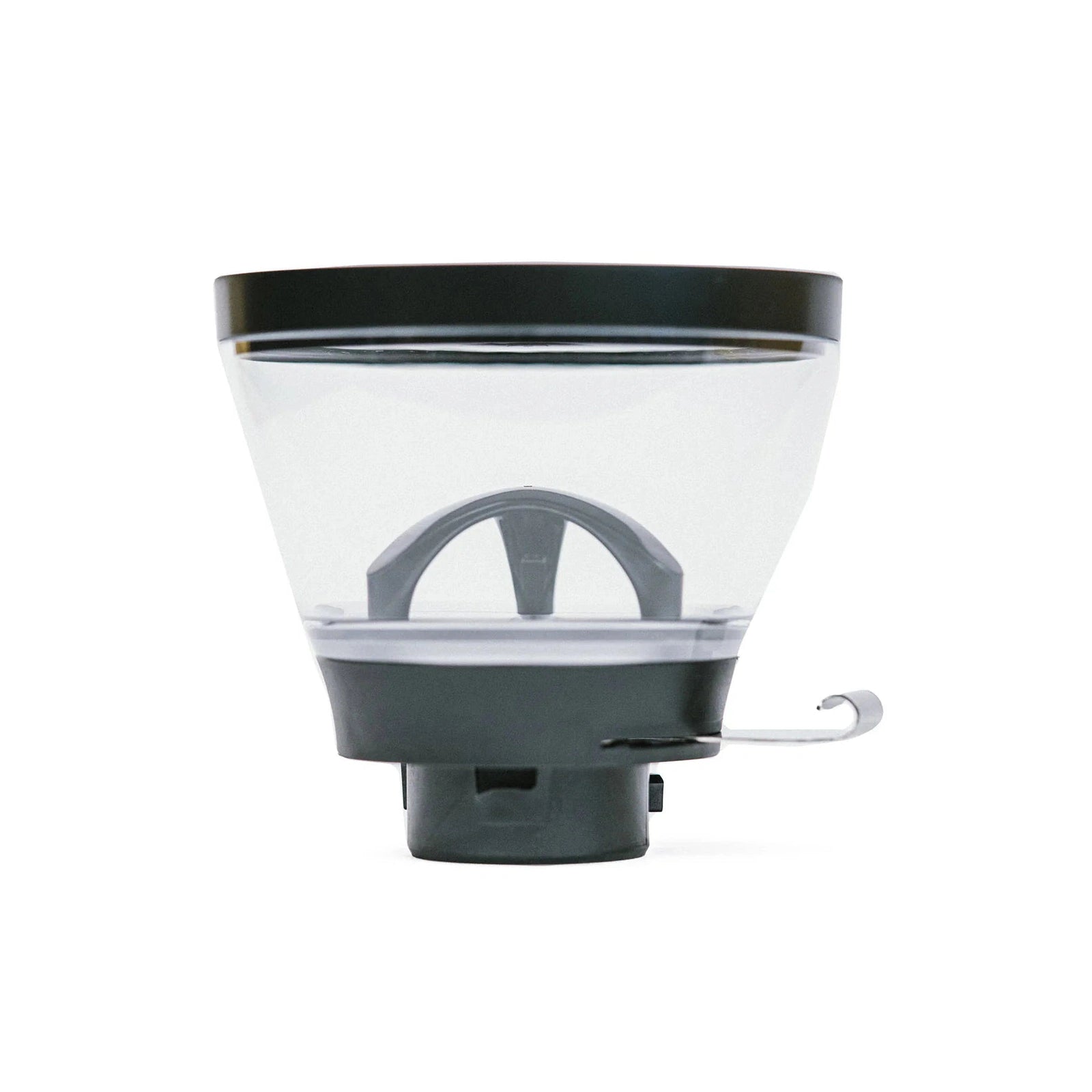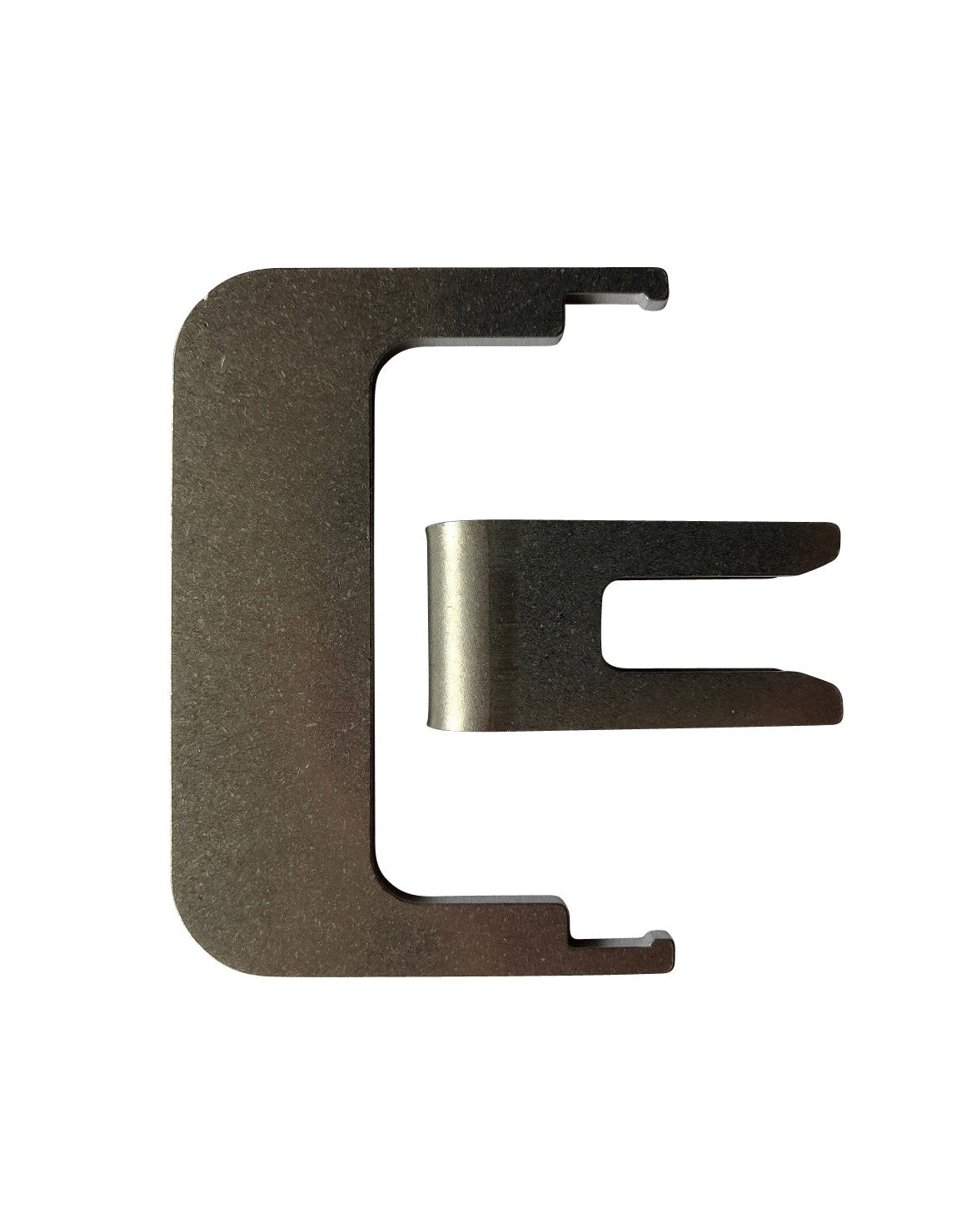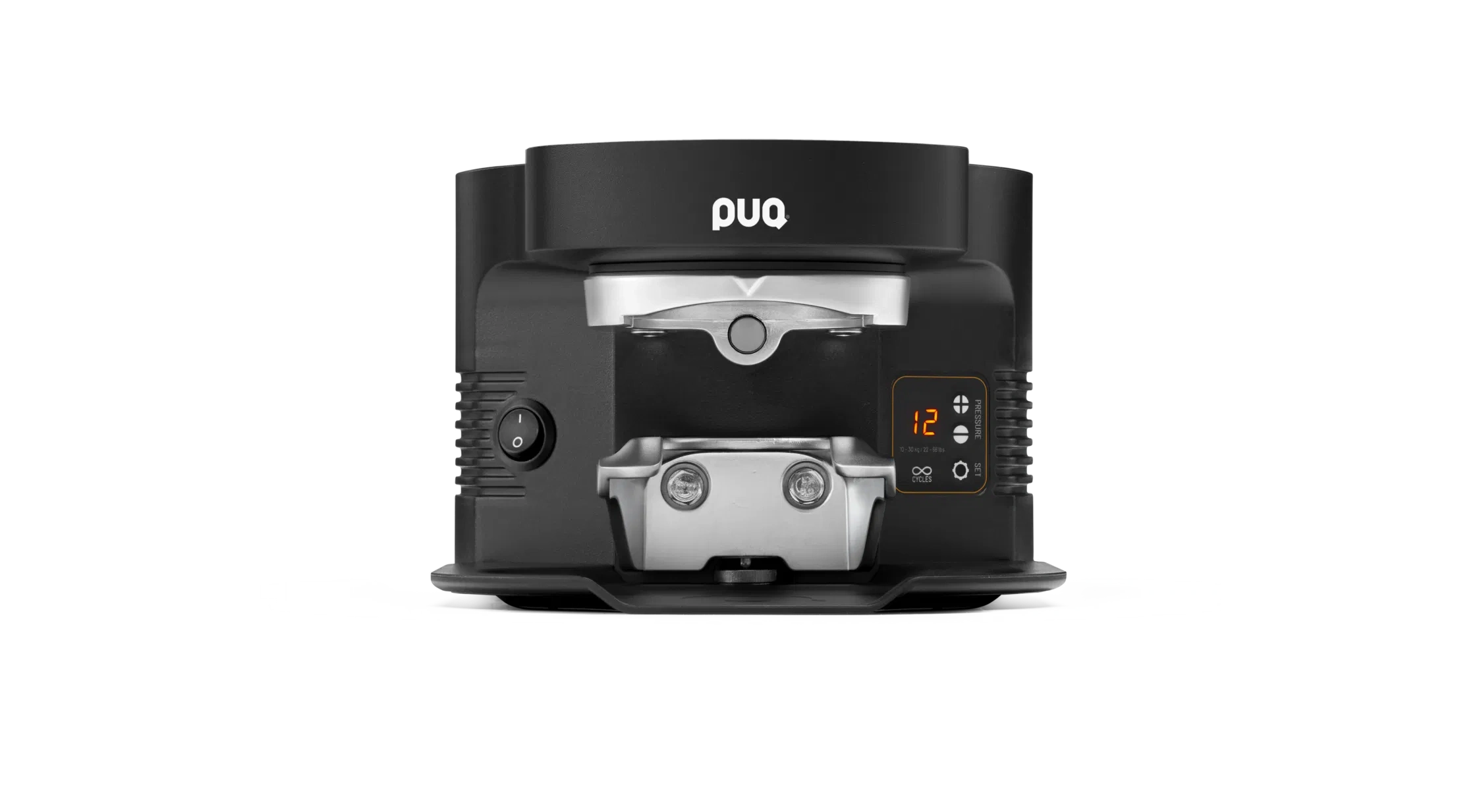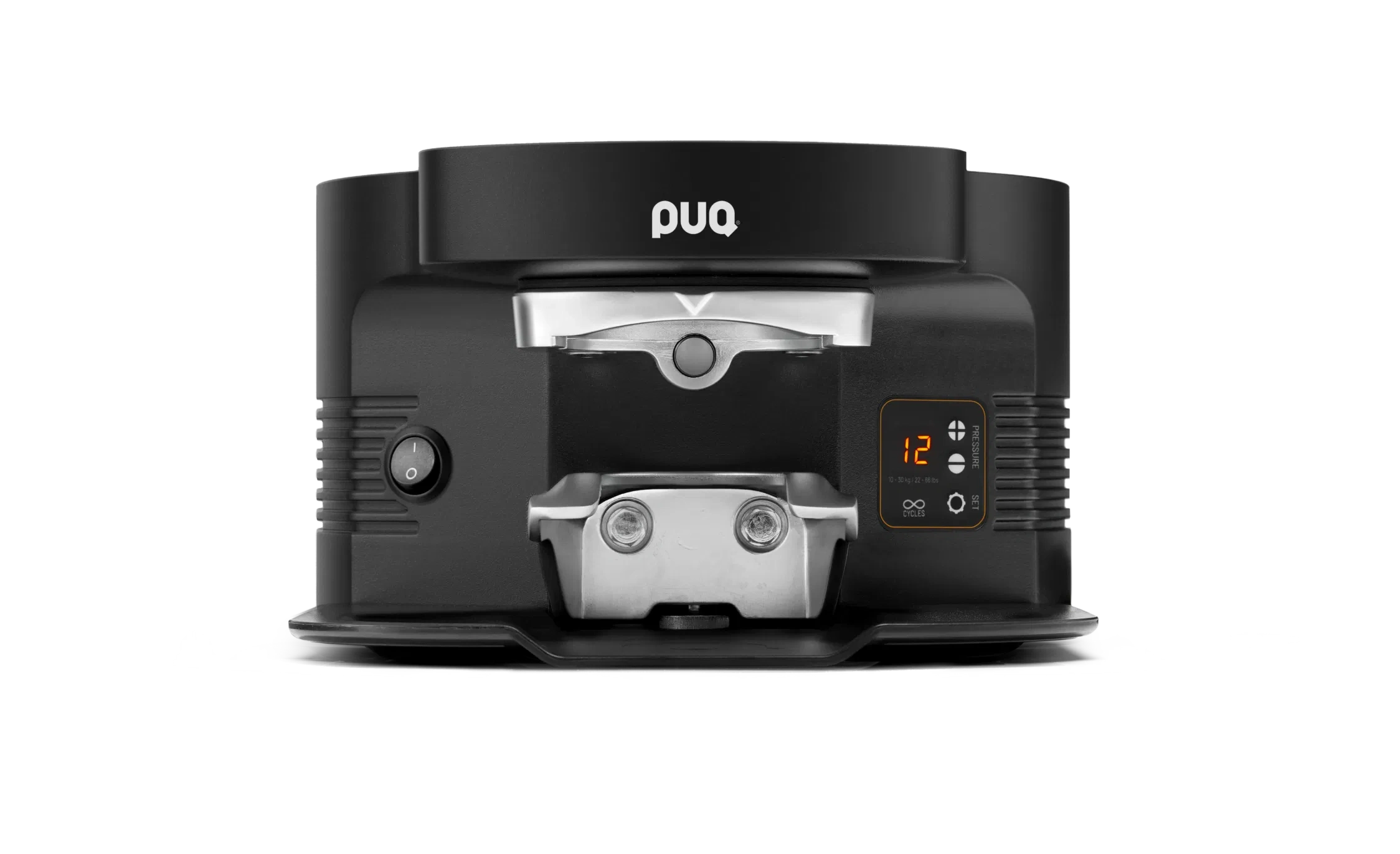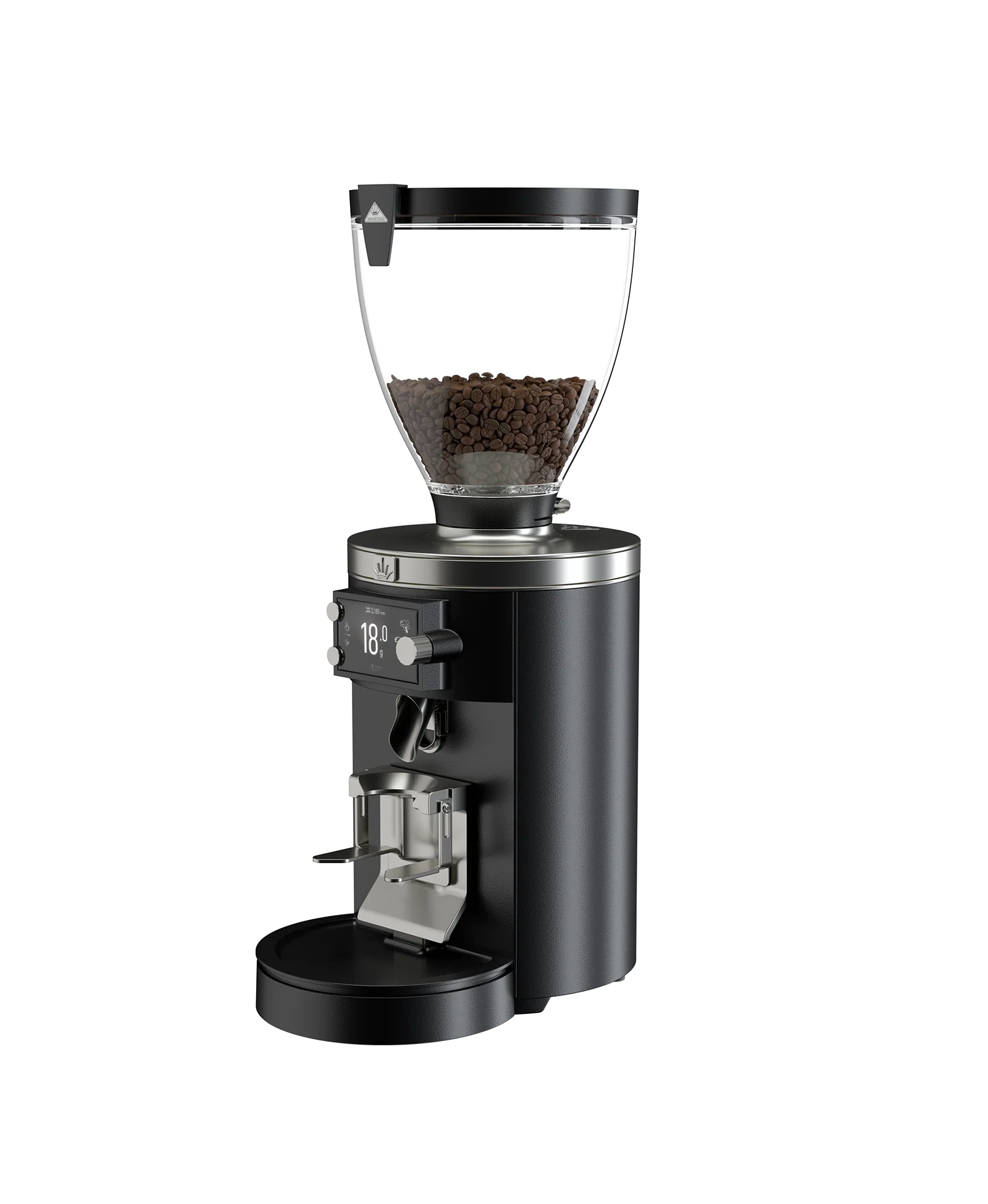
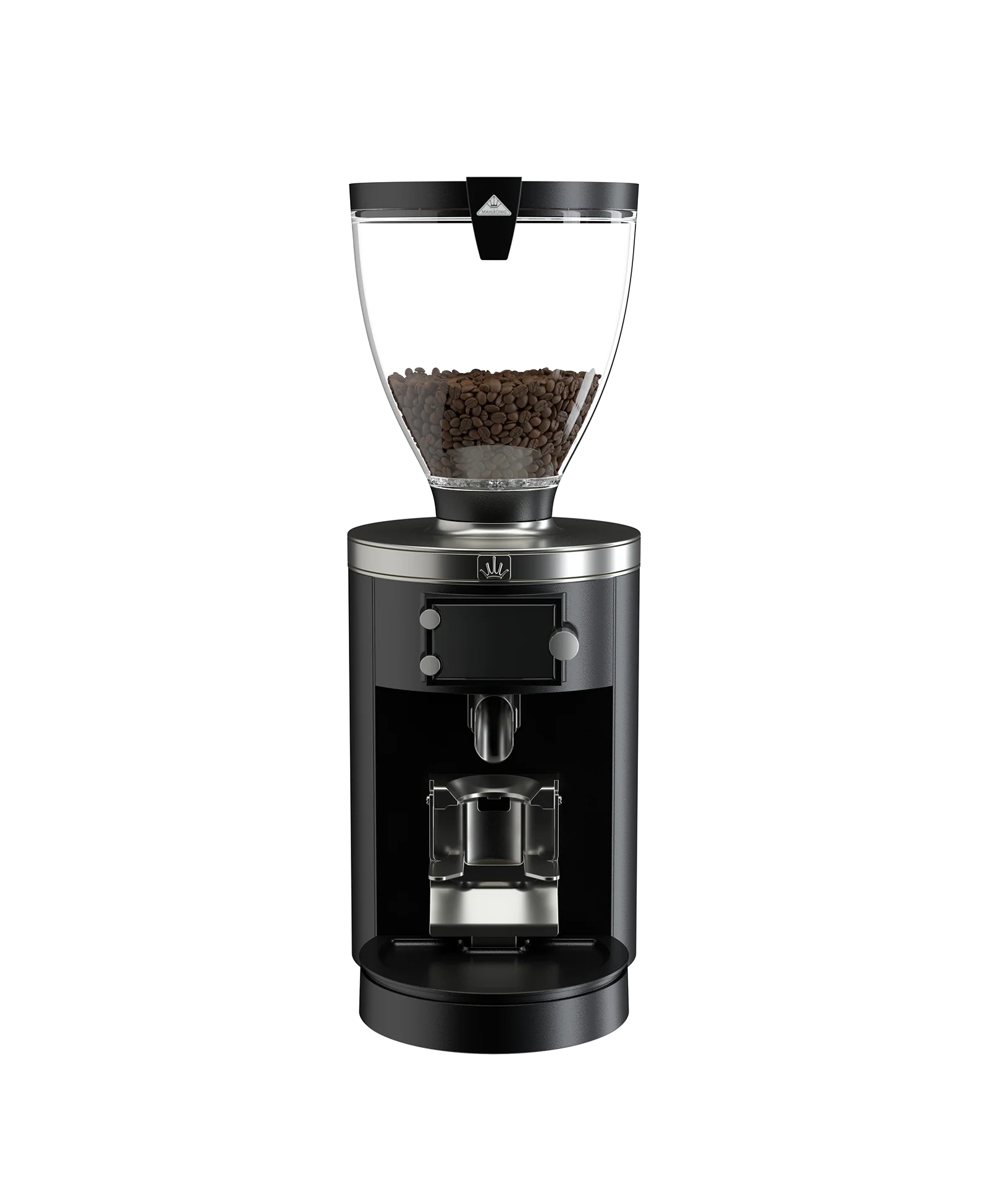
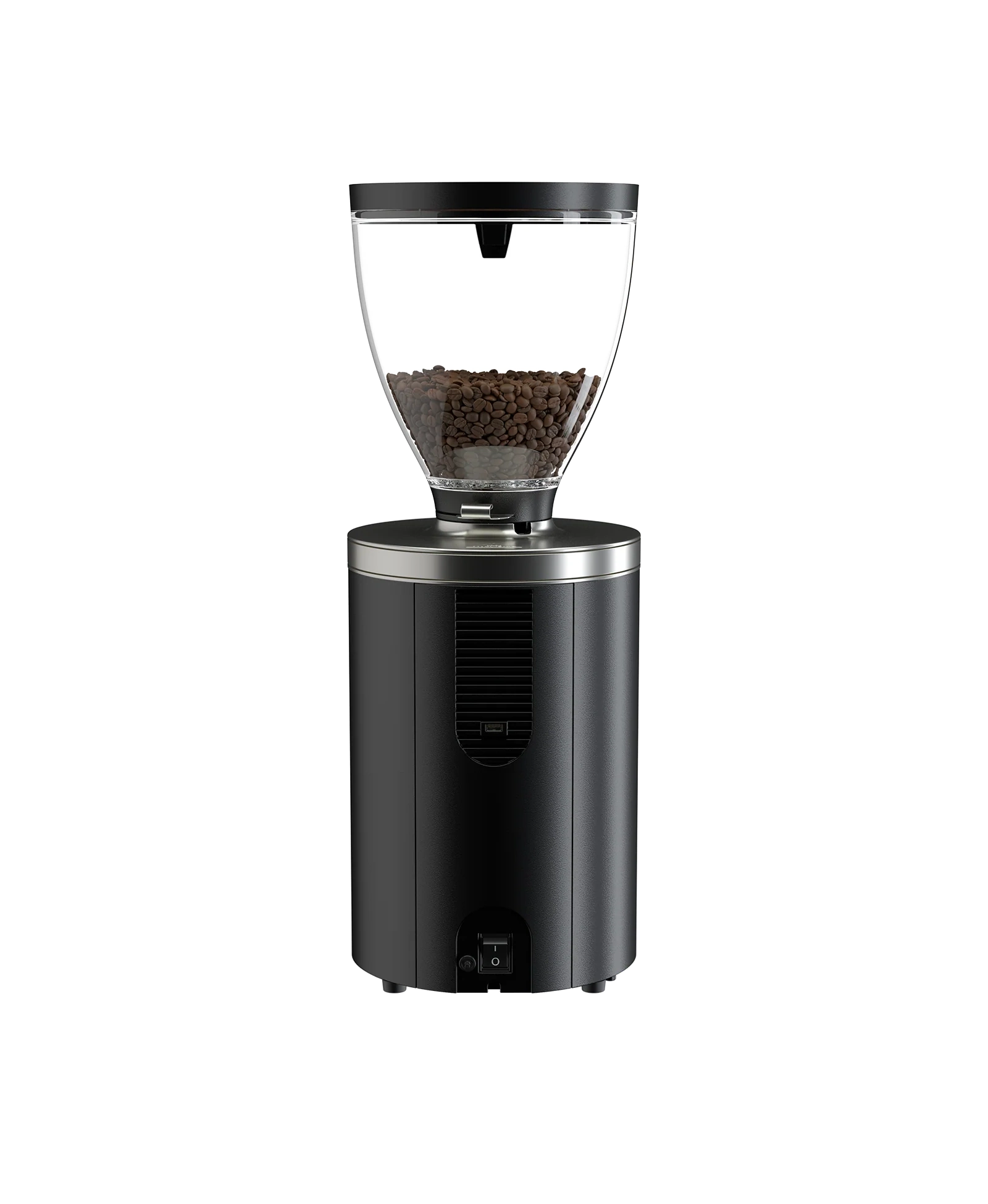
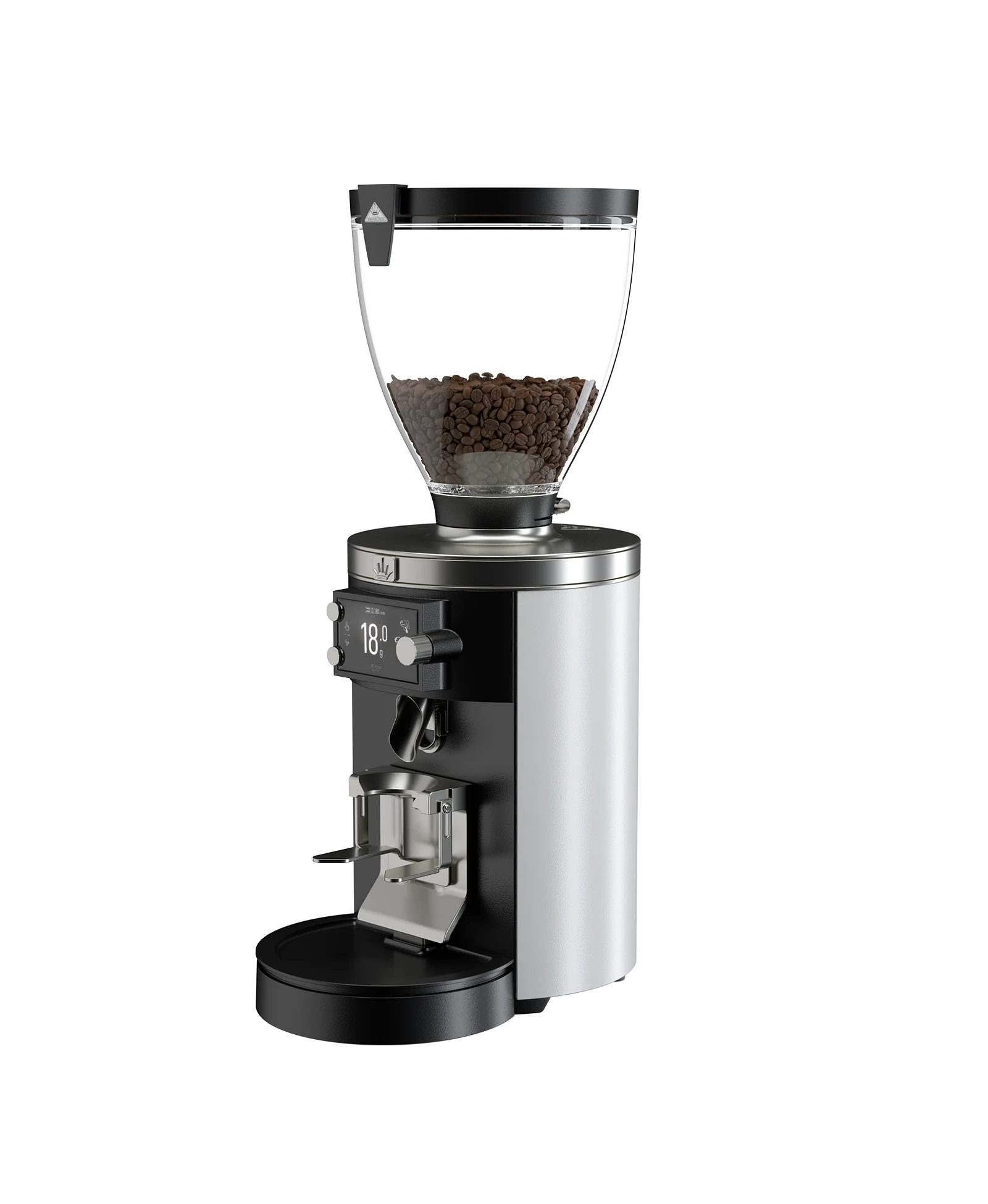
Mahlkönig E80W GbS - the future of networked espresso grinding
🚚 Shipping within EU: 34 €
EU shipping costs, see shipping policy.
Incl. IVA
Finanzieren ab 145,16 € / Monat* mit
🚚 Shipping within EU: 34 €
EU shipping costs, see shipping policy.
Passt wunderbar dazu

Mahlkönig E80W GbS - the future of networked espresso grinding
Mahlkönig E80W GbS - the future of networked espresso grinding
The Mahlkönig E80W GbS defines how modern coffee grinding works: fast, precise and intelligently networked. As the world's first espresso grinder with Grind-by-Sync technology, it communicates directly with the La Marzocco Cloud Connect network via The Sync System - for fully automatic synchronization between grinder and espresso machine. Designed for busy coffee shops and professional bars, it combines maximum speed, efficiency and consistency in every cup.
Grind-by-Sync & Cloud Connect
The E80W GbS is fully Cloud Connect enabled and has been specifically designed to integrate into the La Marzocco ecosystem, communicating wirelessly with compatible La Marzocco espresso machines - including Strada S, KB90, Linea PB / PB X, GB5 S and GB5 X- via The Sync System. The system automatically adjusts brewing parameters and grinds to ensure that every shot is exactly the desired extraction time and recipe. In conjunction with the Mahlkönig Sync app, the grinder becomes part of a cloud-based workflow that ensures quality and reproducibility across multiple locations.
Electronic precision with intelligent control
The electronic grind adjustment is made by micromotor in 0. 001 mm increments and is controlled by an algorithm that automatically adjusts to extraction times and recipe data. Baristas can adjust the distance manually or leave it to the grinder to make precise corrections in real time. The patented Disc Distance Detection (DDD) guarantees absolute consistency with every adjustment.
Cloud data and analysis in real time
The Mahlkönig Sync app and Cloud Connect integration allows managers and roasters to centrally manage grinders and machines. Recipe data, consumption trends and maintenance information are automatically stored and analyzed. This data transparency enables better planning, faster response times and perfect quality across all locations - a new dimension for digital coffee bars.
Performance and speed
At its heart is a high-performance motor with active temperature control, which delivers lasting stability at high loads. 80 mm special steel grinding discs with optimized geometry ensure even particle distribution and a grinding capacity of up to 8 g/s. The quiet operation and high-quality aluminium housing underline the premium claim of the E80W GbS.
Highlights
- Grind-by-Sync technology: automatic coordination with espresso machine
- Cloud Connect: complete integration into the La Marzocco ecosystem
- Electronic grinding disk adjustment: precise micro-adjustments
- Grind-by-Weight: weight dosing in real time
- Disc Distance Detection (DDD): reproducible grinds
- Automatic portafilter recognition: up to 6 profiles
- 88.3 mm display: intuitive operation with live feedback
- Powerful motor with active cooling: 520 - 845 W
Technical specifications
- Grinding disks: 80 mm special steel
- Service life: approx. 1 500 kg
- Grinding capacity: 6 - 8 g/s @ 250 µm
- Dosing: weight-based & cloud-optimized
- Bean container: 1 800 g (250 g / 1 200 g optional)
- Power: 520 - 600 W (230 V) / 845 W (110 V)
- Speed: 1 400 rpm (50 Hz) / 1 700 rpm (60 Hz)
- Dimensions (W × H × D): 24 × 63 × 34 cm
- Weight: 18 kg
- Colors: Polished aluminum, matt black, matt white
Compatible La Marzocco machines
Strada S | KB90 | Linea PB | Linea PB X | GB5 S | GB5 X
(Cloud Connect currently available in the USA and Australia)
Comparison: E80S vs. E80S GbW vs. E80W GbS
| Feature | E80S | E80S GbW | E80W GbS |
|---|---|---|---|
| Grinding control | Time-based | Weight-based (GbW) | Cloud-based (Grind-by-Sync) |
| Grinding disk adjustment | Manual | Manual with DDD | Electronic (0.001 mm precise) |
| Portafilter detection | Manual | Automatic (6 profiles) | Automatic + cloud-controlled |
| Technology | DDD | DDD + GbW | DDD + GbW + Sync + Cloud Connect |
| Target group | Coffee shops & roasteries | High-end bars & SCA cafés | Digital coffee bars & chains |
| Special feature | Precise high performance | Weight-based dosing | Cloud synchronization & app integration |
Conclusion
The Mahlkönig E80W GbS is more than just an espresso grinder - it is a digitally networked quality system. With Grind-by-Sync, Cloud Connect and precise electronics, it takes process reliability and consistency to the next level. For baristas who don't just grind, but optimize - Made in Hamburg.
Información sobre el fabricante
* Bonität vorausgesetzt. Ratenbeispiel für PayPal Ratenzahlung: effektiver Jahreszins 12,49 % p.a., fester Sollzinssatz 11,80 % p.a., Laufzeit 24 Monate. Genaue Konditionen und Gesamtkosten werden im nächsten Schritt von PayPal angezeigt. Angebot gültig nur für Kunden mit Wohnsitz in Deutschland. Weitere Infos zur Bonitätsprüfung.
If you have any questions, please feel free to contact us at any time. We will get back to you as soon as possible, within 24 hours on weekdays.
-
Shipping info
We ship all products the same day if ordered before 1pm.
-
Soporte
We will also be there to support you and advise you after your purchase. If you have any questions about the product you purchased from us, please contact us.
-
Contact
Email: hello@naturbohne.de
Teléfono: 07454 / 870 48 64
Frequently Asked Questions
I bought a new coffee grinder from Naturbohne and there are coffee residues in it.
Please note: Some manufacturers test their coffee grinders before shipping, which means that small coffee residues or bean residues can occasionally be found in the grinder. This procedure is used to test functionality and is considered a quality feature. Of course, we only sell new products - unless expressly stated otherwise.
Static charge – coffee grounds spray out from the side
With some coffee grinders, the ground coffee can become statically charged and spray out of the portafilter at the side. This means that not all of the ground coffee gets into the portafilter, which can lead to uneven extraction. Our recommendation: Use a dosing funnel to ensure that all of the ground coffee is precisely fed into the portafilter - for optimal espresso enjoyment.
What is dead space in coffee grinders?
Conventional coffee grinders often leave a so-called dead space in which coffee residues accumulate. These residues can not only affect the freshness, but also lead to old and fresh coffee grounds being mixed, which negatively affects the taste. In contrast, single dose grinders have a well-thought-out design that eliminates the dead space. Each portion is ground individually and precisely so that no residues are left behind - for a consistently pure and full-bodied coffee experience.
Which portafilter fits my espresso machine?
When choosing the right portafilter for your portafilter machine, it is important to know that each manufacturer develops its own brewing group - the most well-known is the Faema E61. However, this does not mean that any portafilter will fit without any problems. An incompatible portafilter can leak, which will have a direct negative impact on the quality of your espresso. We therefore recommend using either the portafilter originally supplied or one that is explicitly stated to be compatible with your machine. This will ensure that the pressure is optimally built up and the espresso is perfectly extracted.
Can I visit you or pick up the goods personally?
Yes, of course, you are welcome to come by and look at our products by appointment. We would be happy to advise you personally. The best thing to do is to send us an email with a few suggested appointment times.
We are located 5 minutes from the motorway between Stuttgart and Lake Constance on the edge of the Black Forest.
Important note, first use coffee grinders
Another little tip for the perfect start with your new mill:
You will get the best grinding result after you have ground about 1-2 kg of beans. It is best to use a few cheap beans so that the grinder can work optimally. And if you are wondering what you can do with the bean flour - it is perfect plant fertilizer! 🌿
It contains nitrogen, potassium, sulfur and phosphorus and is a real nutrient bomb for your plants.
¿Pueden realizar una calibración de offset en mi máquina de portafiltro?
Existen varios argumentos en contra de una calibración de compensación en las máquinas de portafiltro Lelit, especialmente en modelos como la Lelit Bianca. Estos se refieren principalmente a la complejidad y las limitaciones de la compensación como única solución para problemas de temperatura:
- Fluctuaciones de temperatura e inestabilidad. La compensación considera una diferencia constante entre la temperatura de la caldera y la temperatura de preparación. Sin embargo, en la práctica pueden ocurrir fluctuaciones de temperatura, por ejemplo, debido a tiempos de espera prolongados o preparación continua. Esto hace que la temperatura de preparación real no siempre sea predecible con precisión.
- Dependencia de las condiciones ambientales. Factores como la temperatura ambiente, la humedad y el estado de la máquina (por ejemplo, el tiempo de calentamiento) afectan significativamente la temperatura de preparación. Una compensación fija no puede equilibrar dinámicamente estas variables, lo que puede llevar a resultados inexactos.
- Pérdida de calor durante los tiempos de espera. Después de pausas prolongadas, el grupo de preparación se enfría y la máquina necesita tiempo para volver a la temperatura deseada. Una compensación correctamente ajustada no puede compensar esto, por lo que son necesarias medidas adicionales como un "Cooling Flush".
- Desajustes de fábrica. En algunos modelos de Lelit se ha encontrado que la compensación de fábrica a menudo está configurada de manera inexacta (por ejemplo, de 4 a 8 grados demasiado baja en la Lelit Bianca). Esto requiere una recalibración manual por parte de personal especializado, lo cual puede ser complicado para los usuarios finales.
- Malentendidos en la aplicación. Muchos usuarios están confundidos por la información contradictoria sobre la configuración de la compensación, lo que puede llevar a ajustes incorrectos. Por ejemplo, a menudo se espera que la compensación por sí sola resuelva todos los problemas de temperatura, aunque solo es parte de un sistema más complejo.
Conclusión
La calibración de compensación es una herramienta útil, pero no debe considerarse de forma aislada. Una combinación de control PID preciso, mantenimiento regular y técnicas adaptadas (por ejemplo, "spülshots") es necesaria para lograr resultados óptimos de preparación.
Do you have any more questions?
Contact
If you have any questions about our products, please write to us here or use the chat function.
